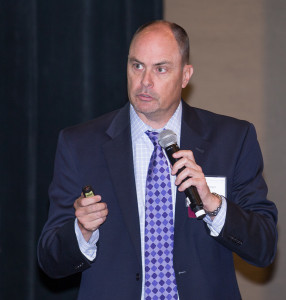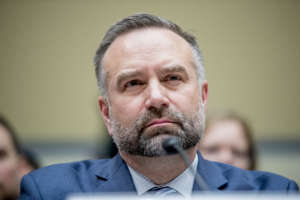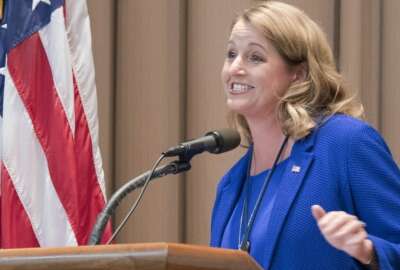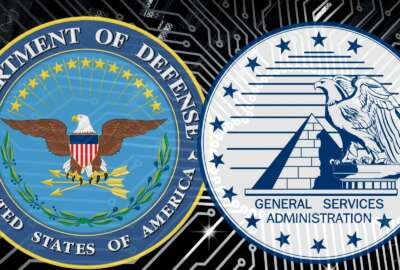
Congress expected to play bigger role in federal IT in 2019
Six federal IT experts offer their observations about what to watch for in 2019 and what organizations and people will have the biggest impacts.
Best listening experience is on Chrome, Firefox or Safari. Subscribe to Federal Drive’s daily audio interviews on Apple Podcasts or PodcastOne.
Even with all the focus and concern over the partial government shutdown, let’s not lose sight of the potential and real impact technology will continue to have on agencies in 2019.
For the past seven years, agencies have talked about moving the cloud. Expect the Office of Management and Budget, through the General Services Administration, to make an even bigger push to move commodity technology like e-mail to the off-premise providers.
For the past dozen years, cybersecurity has been an all-encompassing problem. With the changes to the continuous diagnostics and mitigation (CDM) program from GSA and the Homeland Security Department and the better understanding of governmentwide cyber risk, many expect 2019 to be the year that agencies see real progress in fixing those systemic cyber hygiene problems.
And for the past three years, IT modernization has soared to the top of nearly every agency chief information officers’ and contractors’ priority list. In many ways, 2019 will be a make-or-break year for the Trump administration’s Centers of Excellence efforts to show real progress in moving agencies off legacy systems and improve services to citizens.
So it’s no surprise that when I asked a federal IT experts for their insights about what we should expect in 2019 that they mentioned these topics time and again. But what is surprising is the discussion about who or what entity will have the most influence over the federal IT community. In part one of this discussion, I asked these same experts for their observations about the impact of federal IT in 2018.
Here are the answers on what to expect in 2019, edited for clarity and length, from:
- Rich Beutel, managing principal for Cyrrus Analytics LLC
- Alan Chvotkin, executive vice president and counsel for the Professional Services Council
- Mike Hettinger, managing principal of the Hettinger Strategy Group
- Trey Hodgkins, senior vice president, public sector for the Information Technology Alliance for Public Sector (ITAPS)
- Dave McClure, director CIO advisory at Accenture Federal Services
- Dave Powner, director of strategic engagement and partnerships for Mitre
What are your expectations for 2019 for federal technology?

Hettinger: Keep an eye on emerging technologies. With the increased focus on enhancing customer service delivery, technologies like blockchain, artificial intelligence (AI) and robotics process automation (RPA) will begin to play a more prominent role in government extending beyond the pilot phase to become more mainstream. Further, if President Donald Trump insists on cutting budgets, five percent or more, agencies will turn to automation as a way to bring operating costs down.
Chvotkin: Increased constructive and destructive federal IT oversight hearings from the Democratic-controlled House, including from the Oversight and Government Committee.
Continued slow progress on IT modernization, including in the cybersecurity and supply chain risk management areas.
Continued growth in the use of other transaction authorities (OTAs), especially by defense agencies
More AI/machine learning use cases to emerge across government.
Risk of grid-lock for the fiscal 2020 budget process.
Beutel: I believe that it will be a year of implementation, with a growing focus upon the need to adopt commercial technologies and commercial best practices. The Defense Enterprise Office Solutions (DEOS) award in the Department of Defense is an excellent example.
McClure: In terms of technology, I see a rapid shift towards hybrid cloud architectures and more intelligent, proactive cybersecurity as overarching trends. I also believe that growing citizen expectations, emerging AI technologies and continuing cost pressures will force agencies to redefine their contact center strategy. I also see the emergence of digital platforms as being a way to drive quicker wins at low costs across large swaths of application modernization efforts.
Powner: Modernization will result in more major mission enhancements, not just operational IT efficiencies. Interest in AI will continue to rise, with legislators and policymakers joining in to investigate challenges limiting its utility. Supply chain security and resilience will continue to be enhanced
Hodgkins: A sustained focus in the administration and on Capitol Hill on the importance of continuing to modernize information technology in the federal government.
What are three agencies/congressional committees/organizations which will have big impacts on the federal technology market in 2019?

McClure: USDA modernization lessons learned – We are going to see a significant and sustained effort to capture and promote these best practices governmentwide.
House Committee on Oversight and Reform’s ongoing oversight of IT modernization progress and outcomes – expect a rare bipartisan effort to use both carrots and sticks to drive improved operational performance and more comprehensive cybersecurity.
Can DoD jump into the cloud? — If they continue to move forward, both JEDI and DEOS have the potential to transform the Pentagon into a cloud-first environment.
Hettinger: In the executive branch, the focus will shift from the Agriculture Department to the Department of Housing and Urban Development as it relates to the IT modernization centers of excellence. This should garner a lot of attention. I think you’ll also see a focus the Census Bureau. With 2020 bearing down on the department and a history of IT failures, Census will jump into the spotlight. Last but certainly not least is Congress. I expect rigorous oversight from the House Oversight and Reform Committee on the administration generally, but also getting into issues affecting the day-to-day operations of the government. This means oversight of the reorganization plans, the President’s Management Agenda (PMA) and on down the list. Rep. Gerry Connolly (D-Va.) will play a leading role in all of this.
Powner: The House Oversight and Reform Committee continuing its efforts on FITARA implementation, cyber issues and AI.
The House Veterans Affairs IT Subcommittee’s efforts on enhancing services to our veterans, including the oversight of the electronic health records acquisition.
House and Senate armed services committee for its continued moves to reduce the risk the DoD takes on from contractors and vendors.
Most appropriation, authorization and oversight committees will have cybersecurity issues as a major focus of their legislative agendas.
Related Stories
House of Representatives for its role in funding federal technology and for its oversight agenda, including from the Oversight and Reform Committee.
Federal health activities, including VA and DoD EHR market opportunities, policy direction and performance outcomes.
Hodgkins: Margaret Weichert in her role as deputy director for management at the Office of Budget and Management will play a central role in enabling IT modernization and implementation of the President’s Management Agenda.
The Department of Homeland Security for the voice they will have in critical cyber issues, like software and supply chain assurance.
The Department of Defense and their overseers, the House and Senate armed services committees, for their statutory efforts to address technology-based threats to the United States.
Beutel: The House Oversight and Reform Committee and the Senate Homeland Security and Governmental Affairs as well as the White House and OMB will have the biggest impacts.
Read more of the Reporter’s Notebook
Copyright © 2025 Federal News Network. All rights reserved. This website is not intended for users located within the European Economic Area.
Jason Miller is executive editor of Federal News Network and directs news coverage on the people, policy and programs of the federal government.
Follow @jmillerWFED






